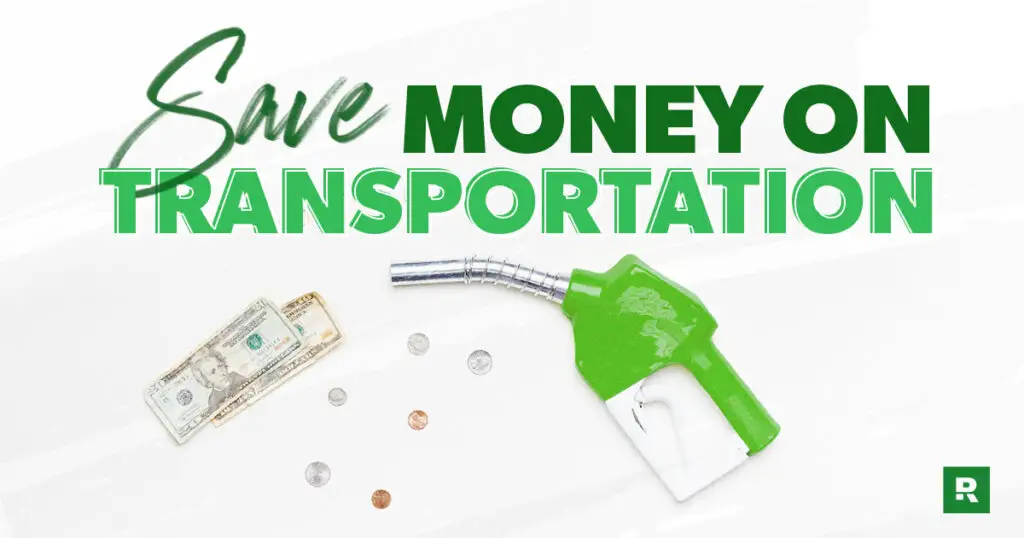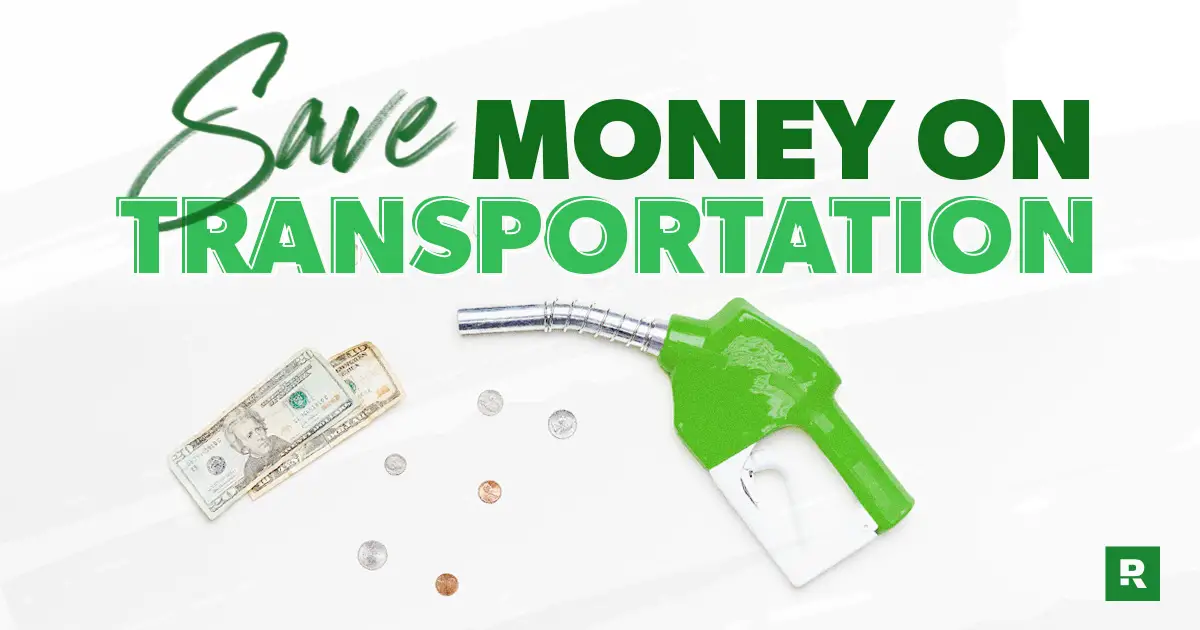Introduction
Welcome to frugaldude.org! In this article, I will share with you some valuable tips on frugal transportation and how to save money on your daily commute. Let’s face it, transportation expenses can take a toll on our wallets, but by making small changes to our daily routines, we can significantly reduce these costs. So, let’s dive right in and see how we can become more frugal when it comes to our daily commuting!
1. Public Transportation – A Great Money-Saving Option
Using public transportation is a fantastic way to save money on your daily commute. Instead of driving your own car and dealing with fuel costs, parking fees, and maintenance expenses, consider taking a bus, train, or subway. Public transportation not only helps you save money but also reduces your carbon footprint, making it an environmentally friendly choice.
2. Carpooling – Share the Ride, Split the Cost
Another excellent option to save money on transportation is carpooling. Find colleagues or neighbors who live in close proximity to you and share the ride. By splitting the cost of fuel and tolls, you can significantly reduce your daily commuting expenses.
3. Biking or Walking – A Healthy and Cost-Effective Solution
If you live within a reasonable distance from your workplace, consider biking or walking. Not only will these options help you save money, but they also offer health benefits. Biking or walking not only saves you on fuel costs but also allows you to incorporate exercise into your daily routine.
4. Plan Your Route and Avoid Rush Hour Traffic
Planning your route in advance can help you avoid rush hour traffic and save money on fuel. By taking an alternative route or adjusting your schedule, you can reduce the time spent in traffic and save on fuel consumption.
Carpooing
Benefits of carpooling
Carpooling is an excellent way to save money on your daily commute. Not only does it reduce the cost of transportation, but it also has several other benefits. First and foremost, carpooling allows you to share the fuel expenses with your fellow passengers, significantly reducing the amount of money spent on gas. This is especially helpful if you have a long commute or if you live far from your workplace.
Besides the financial advantages, carpooling also helps to reduce traffic congestion and lowers your carbon footprint. By sharing a ride with others, you are effectively reducing the number of vehicles on the road, which in turn decreases traffic congestion during peak hours. Additionally, carpooling helps to reduce air pollution as fewer vehicles result in lower emissions, benefiting both the environment and our overall health.
Finding carpool partners
Finding carpool partners may seem challenging, but there are several effective ways to connect with others who have similar commuting routes. Start by asking your colleagues or neighbors if they are interested in carpooling. You can also reach out to online platforms and apps specifically designed for connecting commuters looking to share rides. These platforms use your location and workplace details to match you with potential carpool partners, making the process convenient and efficient.
Setting up a carpool schedule
Once you have found carpool partners, it is essential to establish a consistent schedule that works for everyone involved. Determine the arrival and departure times that accommodate the needs of all participants, taking into consideration any additional stops or errands along the way. It is crucial to communicate with your carpool partners and set clear expectations regarding punctuality and any potential changes or delays in the schedule.
Carpooling is a fantastic way to save money on your daily commute while also benefiting the environment and reducing traffic congestion. By finding carpool partners and setting up a structured schedule, you can make your daily commute more cost-effective and enjoyable. So, why not consider carpooling as an excellent frugal transportation option?

Public Transportation
Public transportation is a great option for frugal individuals looking to save money on their daily commute. Not only does it offer numerous cost-saving advantages, but it also provides a convenient and eco-friendly alternative to driving your own car. In this section, I will explore the advantages of using public transportation, how to research available options, and the benefits of using apps to enhance your commuting experience.
Advantages of using public transportation
One of the main advantages of public transportation is its affordability. Taking the bus or metro is significantly cheaper than driving a car, as you don’t have to worry about the costs of gas, parking fees, and vehicle maintenance. Moreover, public transportation systems often offer discounted fares for regular commuters, allowing you to save even more money in the long run.
Another benefit is the reduction in stress and hassle. Traffic congestion can be a major source of frustration, but by opting for public transportation, you can relax and let someone else do the driving. Additionally, using public transportation can be more time-efficient, as you can read, work, or simply enjoy your commute without having to focus on the road.
Researching public transportation options
Before embracing public transportation, it’s essential to research the available options in your area. Start by exploring the routes, schedules, and fares of local buses, trains, or subways. Many cities also offer special passes or discount programs for frequent users. Utilize websites and apps like FrugalDude.org to find reliable information and user reviews that can help you make informed decisions about which modes of public transportation are best suited for your needs.
Using apps for public transportation
Technology has made it easier than ever to navigate public transportation systems. Take advantage of various apps that provide real-time updates on bus and train arrivals and departures, helping you plan your commute more efficiently. Some apps even offer alerts in case of delays or service disruptions, allowing you to adjust your travel plans accordingly. By using these apps, you can optimize your time and minimize potential inconveniences.
public transportation is a frugal and practical solution for daily commuting. Not only is it cost-effective, but it also offers other advantages such as reduced stress and increased productivity during your commute. By conducting thorough research and utilizing helpful apps, you can enhance your public transportation experience and enjoy the benefits it brings to your wallet and overall lifestyle.

Cycling
Cycling is a fantastic way to save money on your daily commute. Not only does it offer significant cost savings, but it also comes with numerous benefits for both your health and the environment. Let’s dig deeper into why cycling can be an excellent choice for frugal transportation.
Benefits of cycling for commuting
There are several advantages to incorporating cycling into your daily commute. Firstly, it’s a great way to stay physically active and boost your overall fitness. By pedaling your way to work, you can easily meet your recommended daily exercise quota without having to visit the gym. Additionally, cycling also improves cardiovascular health, muscle tone, and stamina.
Moreover, cycling is an environmentally friendly alternative to using a car or public transportation. It produces zero emissions and contributes to reducing air pollution. By opting for cycling, you can actively contribute to conserving the planet’s resources while saving money on fuel costs.
Choosing the right bike
When it comes to cycling as a form of transportation, having the right bike is crucial. Consider the distance of your commute and the terrain you’ll encounter to determine the most suitable type of bike for your needs. For shorter commutes in urban environments, a city bike or a folding bike may be more appropriate. However, if you have a longer journey or need to conquer hilly terrains, a road bike or a mountain bike may be better options.
Ensuring safety while cycling
Safety should always be a top priority when cycling. Start by investing in a sturdy helmet that fits properly. It’s also important to wear bright and reflective clothing to increase visibility, especially during low light conditions. Familiarize yourself with local traffic laws and always follow them diligently. Furthermore, make sure your bike has working lights, reflectors, and brakes. Regularly check the tires and brakes for any signs of wear and tear.
By adopting cycling as your daily commute option, you can enjoy the financial benefits, improve your fitness, and contribute positively to the environment. So, hop on your bike and start saving money while staying healthy!

Walking
Benefits of walking as a mode of transportation
Walking is a simple and cost-effective way to commute, not to mention the multiple health benefits it offers. Incorporating walking into your daily routine can save you money on transportation expenses, improve your fitness level, and reduce your carbon footprint. By choosing to walk, you not only save money but also contribute to a more sustainable and eco-friendly lifestyle.
Planning your route
When considering walking as your mode of transportation, it’s important to plan your route ahead of time. Take advantage of various navigation apps and online maps to find the most direct and safe route. Look for pedestrian-friendly areas and well-lit streets, ensuring your journey is both efficient and secure. Additionally, consider alternative paths such as parks or scenic routes to make your commute more enjoyable and refreshing.
Staying safe while walking
While walking is generally a safe mode of transportation, it’s crucial to prioritize your safety. Always be aware of your surroundings and use designated crosswalks and sidewalks. In low-light conditions, wear reflective clothing or accessories to increase your visibility to drivers. If possible, walk with a friend or in a group, especially during nighttime hours. Lastly, keep your belongings secure to avoid any potential theft or loss.
Walking can be a fantastic way to save money on your daily commute. Not only does it provide numerous health benefits, but it also allows you to reduce your carbon footprint and contribute to a more sustainable lifestyle. By planning your route and staying safe, walking can become an enjoyable and efficient mode of transportation in your frugal journey. So lace up your shoes and take advantage of the multiple advantages that walking has to offer.

Telecommuting
Exploring telecommuting opportunities
One of the most effective ways to save money on your daily commute is by exploring telecommuting opportunities. Telecommuting refers to working from home or remotely, eliminating the need for commuting to a physical office. In recent years, the rise of technology and the internet has made telecommuting a viable option for many professionals.
To explore telecommuting opportunities, start by discussing the possibility with your employer. Many companies now offer flexible working arrangements, allowing employees to work remotely several days a week or on a full-time basis. Additionally, keep an eye out for job listings that specifically mention telecommuting positions.
Setting up a home office
Once you have the opportunity to telecommute, setting up a comfortable and productive home office is essential. Choose a quiet and dedicated space in your home where you can focus on your work. Invest in a comfortable chair and an ergonomic desk to ensure proper posture and avoid discomfort during long hours of work.
Equip your home office with all the necessary tools and equipment you need for your job. This may include a reliable computer or laptop, a high-speed internet connection, a printer, and any specific software or programs required for your work. Consider shopping for these items during sales or looking for second-hand options to save money.
Maintaining work-life balance while telecommuting
While telecommuting offers many financial benefits, it’s important to maintain a healthy work-life balance. The lines between work and personal life can blur when working from home, so it’s crucial to establish boundaries. Set clear working hours and avoid constantly checking emails or working beyond the designated time.
Take regular breaks and make sure to incorporate physical activity into your daily routine. This could be as simple as going for a walk or doing a quick workout. Additionally, make time for social interactions and engage with your colleagues virtually to maintain a sense of connection.
explore telecommuting opportunities, set up a comfortable home office, and maintain a healthy work-life balance to save money on your daily commute. Embracing telecommuting as an alternative to traditional commuting can not only help you cut costs but also offer flexibility and improved productivity.
Flexible Work Schedules
Negotiating flexible work hours
One way to save money on your daily commute is by negotiating flexible work hours with your employer. This can allow you to avoid rush hour traffic, saving you both time and money.
By starting and finishing work at non-peak times, you can take advantage of lower fares on public transportation or find cheaper parking options. Additionally, flexible work hours give you the freedom to plan your commute when traffic is lighter, helping you avoid unnecessary fuel consumption and wear and tear on your vehicle.
Arranging compressed work weeks
Another option to consider is arranging a compressed work week. Instead of working the traditional five days, you can request to work longer hours over fewer days. For example, you could work four ten-hour days instead of five eight-hour days.
By condensing your work schedule, you can significantly reduce your commuting costs. With one fewer day of commuting each week, you can save money on transportation expenses such as fuel, parking, and tolls. Additionally, by having an extra day off, you can spend less on meals and other expenses related to commuting.
Utilizing flextime options
Flextime is another flexible work schedule option that can help you save money on your daily commute. With flextime, you have the freedom to choose when you start and finish your workday within a set range of hours determined by your employer.
By taking advantage of flextime and avoiding peak commuting hours, you can reduce your commuting time and expenses. Public transportation fares are often lower during off-peak hours, and you may also find it easier to secure parking at a lower cost. Additionally, with the ability to choose when you commute, you can plan your travel to avoid congested routes, further decreasing fuel consumption and wear on your vehicle.
Incorporating flexible work schedules can have a significant impact on your daily commute expenses. By negotiating flexible work hours, arranging compressed work weeks, or utilizing flextime options, you can save money on transportation costs and make your daily commute more affordable. Explore these options with your employer and start enjoying the benefits of a frugal and efficient daily commute.

Bike Sharing
Advantages of bike sharing programs
Bike sharing programs have gained popularity in recent years and can be a fantastic option for frugal transportation. There are several advantages to utilizing bike sharing for your daily commute. First and foremost, it is an economical choice. Instead of spending money on gas, parking fees, or public transportation, bike sharing allows you to save significant amounts of money. It is a cost-effective alternative that is particularly beneficial for short-distance trips.
Additionally, bike sharing programs promote environmental sustainability. By opting for a shared bicycle instead of a motorized vehicle, you contribute to reducing carbon emissions and minimizing your carbon footprint. It is a small but impactful way to make a positive environmental impact on a daily basis.
Finding bike sharing stations
Finding bike sharing stations in your area is relatively straightforward. Most cities now have dedicated apps or websites that provide real-time information about the location of bike sharing stations and the number of available bicycles. You can also find this information displayed on interactive maps placed around the city.
Alternatively, you can download a bike-sharing app that allows you to access a network of different bike sharing programs across various cities. These apps provide convenient features like reservations, bike availability, and even directions to the nearest station.
Understanding bike sharing etiquette
When utilizing a bike sharing program, it is essential to understand and follow the proper etiquette. Always ensure that you return the bike to a designated station when you are finished using it. This allows others to easily find a bicycle when they need one. Be mindful of other riders and pedestrians, follow traffic rules, and respect the rights of others on the road.
By adhering to these basic guidelines, you contribute to a harmonious bike sharing community and ensure that the system remains efficient and accessible for everyone.
bike sharing programs offer an economical and environmentally friendly solution for your daily commute. Utilizing them can save you money, reduce carbon emissions, and improve overall mobility. Remember to find bike sharing stations using dedicated apps or websites, and always practice good etiquette when using the service. With these tips in mind, you can make the most of bike sharing and enjoy a frugal and sustainable transportation option.
Motorcycle or Scooter
When it comes to finding a frugal mode of transportation for your daily commute, motorcycles and scooters are often overlooked. Many people automatically assume that owning a car is the only way to get around, but I’m here to tell you that isn’t true. In fact, motorcycles and scooters can be a fantastic option for saving money while still getting where you need to go efficiently.
Cost comparison of motorcycles/scooters vs. cars
One of the most significant advantages of motorcycles and scooters is their affordability in comparison to cars. Not only are these vehicles typically cheaper to purchase, but they also require less maintenance and have better fuel efficiency. You’ll find yourself spending significantly less on gas with a motorcycle or scooter, allowing you to save money in the long run.
Choosing the right motorcycle or scooter
Before making a decision, it’s important to carefully consider which type of motorcycle or scooter is best suited for your needs. Think about factors such as engine size, fuel consumption, and overall cost. While larger motorcycles may be more powerful and comfortable for longer rides, smaller scooters are perfect for shorter commutes in crowded cities. Do your research and test drive different options to find the best fit for you.
Safety considerations for motorcycle/scooter commuting
While motorcycles and scooters can be an excellent frugal transportation option, it’s important to prioritize safety. Always wear appropriate safety gear, including a helmet, gloves, and protective clothing. Take a motorcycle safety course to enhance your riding skills and be cautious of other drivers on the road. With the necessary precautions, you can enjoy the benefits of motorcycle or scooter commuting while staying safe.
motorcycles and scooters offer a frugal and efficient alternative to traditional car commuting. They are cost-effective, environmentally friendly, and can make your daily commute much more enjoyable. Consider the cost comparison, choose the right vehicle for you, and prioritize safety to successfully incorporate motorcycles or scooters into your frugal lifestyle. Embrace the freedom and savings that come with this mode of transportation and start enjoying your daily commute in a more economical way.
Combining Modes of Transportation
Mixing carpooling with public transportation
One effective way to save money on your daily commute is by combining different modes of transportation. For instance, you can mix carpooling with public transportation to significantly reduce your expenses. By carpooling with colleagues or friends who travel in the same direction, you can split the cost of fuel and parking. Additionally, carpooling allows you to take advantage of carpool lanes, which can help you save time during rush hour. Once you reach a central location, you can then hop on public transportation, such as buses or trains, to complete your journey. Taking advantage of monthly passes or discounted fares can further cut down your commuting costs.
Using bicycles or scooters for last-mile commuting
Another frugal transportation option is to use bicycles or scooters for last-mile commuting. If you live relatively close to your workplace, cycling or scooting can be a cost-effective and environmentally friendly alternative to driving. Investing in a good quality bicycle or scooter can be a one-time expense that will save you money in the long run. Additionally, you can avoid parking fees and enjoy the health benefits of exercise while commuting.
Integrating telecommuting with alternative transportation options
Telecommuting, or working from home, has become increasingly popular in recent years, and it can be a great way to save money on your daily commute. By working remotely a few days a week, you can reduce your transportation costs substantially. However, when you do have to go into the office, you can still incorporate alternative transportation options. Instead of driving, consider taking public transportation or even walking if the distance permits. This way, you can reduce your reliance on your car and decrease your commuting expenses.
Combining modes of transportation can help you save money and make your daily commute more affordable. By mixing carpooling with public transportation, using bicycles or scooters for last-mile commuting, and integrating telecommuting with alternative transportation options, you can significantly reduce your commuting expenses while also contributing to a greener and more sustainable lifestyle. So, why not give these frugal transportation options a try and reap the benefits of saving money and reducing your carbon footprint?
Fuel-efficient Vehicles
Benefits of driving fuel-efficient cars
When it comes to finding ways to save money on your daily commute, one of the most significant factors to consider is the fuel efficiency of your vehicle. Driving a fuel-efficient car comes with numerous benefits that can help you cut down on your transportation costs.
Firstly, fuel-efficient vehicles can significantly reduce your fuel expenses. These cars are designed to maximize mileage and require less gas to cover the same distance as less efficient models. By switching to a fuel-efficient car, you can save a substantial amount of money on fuel costs in the long run.
Additionally, driving a fuel-efficient vehicle helps to minimize your carbon footprint. These cars typically emit fewer greenhouse gases, making them more environmentally friendly. By choosing to drive a fuel-efficient car, you contribute to reducing pollution and protecting the planet.
Researching fuel-efficient vehicle options
When considering a switch to a fuel-efficient car, it is essential to do thorough research. Start by researching different vehicle options and their fuel efficiency ratings. Look for cars that are known for their high MPG (miles per gallon) ratings, as these models tend to be more fuel-efficient.
Consider factors such as car size, engine type, and hybrid or electric options. Small to mid-sized vehicles with efficient engines are often the most fuel-efficient. Hybrid or electric cars provide additional fuel-saving benefits, but they may come at a higher upfront cost.
Maintaining and maximizing fuel efficiency
To ensure your vehicle continues to operate at peak fuel efficiency, regular maintenance is key. Keep up with scheduled maintenance tasks, such as oil changes, air filter replacements, and tire rotations. Properly inflated tires and regular engine tune-ups can also help maximize fuel efficiency.
In addition to maintenance, adopting fuel-saving driving habits can further boost your car’s efficiency. Avoid sudden accelerations and heavy braking, as these actions waste fuel. Use cruise control when possible, as maintaining a steady speed enhances fuel efficiency. Planning your trips efficiently and avoiding unnecessary idling can also contribute to fuel savings.
By investing in a fuel-efficient vehicle, conducting thorough research, and adopting fuel-saving habits, you can save significantly on your daily commute expenses. Not only will you enjoy the financial benefits, but you’ll also contribute to a greener and more sustainable future.
Conclusion
In conclusion, finding ways to save money on your daily commute can make a significant difference in your overall budget. By implementing some of the frugal transportation tips and tricks I’ve shared in this article, you can potentially save a substantial amount of money every month.
Utilize public transportation or carpooling for a cost-effective commute
Public transportation, such as buses or trains, can be a much cheaper alternative to driving your own car. Not only will you save on fuel costs, but you will also avoid the expenses of car maintenance, parking fees, and tolls. Carpooling is another great option that allows you to split the cost of commuting with others, reducing your expenses even further.
Consider alternative modes of transportation for short distances
For short distances, walking or cycling can be an excellent frugal transportation option. Not only will this save you money on fuel, but it is also a great way to incorporate exercise into your daily routine. Additionally, electric scooters or skateboards can be convenient and cost-effective solutions for covering shorter distances.
Explore flexible work arrangements or remote work options
In the modern era, many companies offer flexible work arrangements or remote work options. This allows employees to work from home a few days a week or even full-time. By eliminating the need for a daily commute altogether, you can save a significant amount of money on transportation expenses.
Take advantage of commuter benefits and discounts
Many employers or local governments offer commuter benefits or discounts for public transportation passes. It is worth exploring these options to see if you can take advantage of any cost-saving initiatives. Additionally, you can also look out for promotional offers or discounted fares for public transportation that may be available in your area.
By implementing these strategies, you can enjoy a frugal transportation lifestyle and reduce your daily commute expenses. Remember, every little saving counts and can make a significant impact on your overall financial well-being. So, whether it’s carpooling, walking, or considering remote work, take control of your daily commute and start saving money today. Make frugal living your new way of life!

